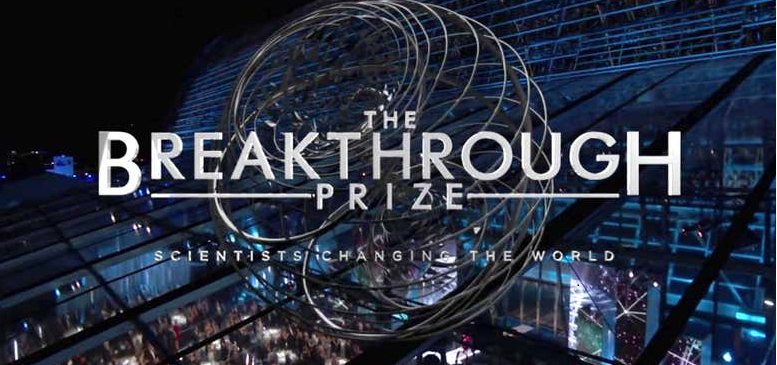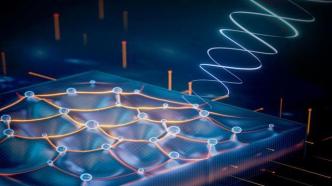
·The "Science Breakthrough Award" is known as the "Oscar of the scientific community". This time, it mainly rewards scholars who have made pioneering contributions in the fields of protein structure prediction, cell organization mechanism and quantum information. A total of 15.75 million US dollars were awarded.

The Breakthrough Prize covers three fields of life sciences, basic physics and mathematics. It was established in 2012 and has a very generous bonus. It can be called the "first award" in the scientific community and is known as the "Oscar in the scientific community". .
On September 23, the list of winners of the "2023 Science Breakthrough Award" was announced. The awards were awarded to 5 research projects in the fields of life sciences, basic physics and mathematics. A total of 11 scientists were awarded.
The "Science Breakthrough Award" is known as the "Oscar of the scientific community". This time, it mainly rewards scholars who have made pioneering contributions in the fields of protein structure prediction, cell organization mechanism and quantum information. A total of 15.75 million US dollars were awarded.
According to the official website of the "Science Breakthrough Award":
Three ground-breaking awards in the life sciences were awarded: 1. Clifford P. Brangwynne from Princeton University, Howard Hughes Medical Institute, and the Marine Biological Laboratory, from Max Planck Anthony A. Hyman of the Institute of Molecular Cell Biology and Genetics for their discovery of the fundamental mechanism of cellular organization mediated by the phase separation of proteins and RNAs into membraneless droplets; 2. From DeepMind Demis Hassabis and John Jumper of Stanford University School of Medicine for their development of the deep learning algorithm AlphaFold that can rapidly and accurately predict the three-dimensional structure of proteins Emmanuel Mignot of Tsukuba and Masashi Yanagisawa from the University of Tsukuba for their discovery that narcolepsy is caused by the loss of a small group of brain cells that The release of wake-promoting substances paves the way for the development of new treatments for sleep disorders. (For details of the Life Science Breakthrough Award, please refer to The Paper's "2023 Life Science Breakthrough Award: AlphaFold, Cell Organization Mechanism and Sleepiness Research" report )

Anthony Heyman and Clifford Blangwyn. Citation: For the discovery of the fundamental mechanism of cellular organization mediated by the phase separation of proteins and RNAs into membraneless droplets.

Demis Hassabis and John Chop. Citation: For the discovery of the fundamental mechanism of cellular organization mediated by the phase separation of proteins and RNAs into membraneless droplets.

Masashi Yanagisawa and Emmanuel Mignot. Citation: The discovery that narcolepsy is caused by the loss of a small group of brain cells that release wake-promoting substances paves the way for the development of new treatments for sleep disorders.
The Breakthrough Prize in Fundamental Physics was awarded to Charles H. Bennett of the IBM Thomas Watson Research Center, Gilles Brassard of the University of Montreal, David Deutsch of the University of Oxford and Peter Shor, Massachusetts Institute of Technology, for their fundamental work in quantum information.

David Deutch, Peter Shore, Charles Bennett, Jill Brassard. Citation: Fundamental work in the field of quantum information.
The Mathematical Breakthrough Prize is awarded to Daniel A. Spielman from Yale University for groundbreaking contributions to theoretical computer science and mathematics, including research on spectral graph theory, the Kadison-Singer problem, numerical linear algebra Optimization and Coding Theory.

Daniel Spearman. Citation: For groundbreaking contributions to theoretical computer science and mathematics, including to spectral graph theory, the Kadison-Singer problem, optimization of numerical linear algebra, and coding theory.
In addition, 6 New Horizons Awards were awarded to 11 scientists and mathematicians who have just made a significant impact in their fields; and 3 "Maryam Mirzakhani New Frontiers" awards, this year there are 3 people won.
The Breakthrough Prize covers life sciences, fundamental physics and mathematics. It was founded in 2012 by Russian billionaire Yuri Milner and his wife and Google co-founder Sergey Brin. The couple, Jack Ma and his wife, founders of Alibaba Group, and Mark Zuckerberg, co-founder of Facebook, and many other well-known industrialists were jointly established to recognize outstanding achievements in the fields of life sciences, mathematics and fundamental physics. contributors. In 2017, Ma Huateng, founder and chairman of the board of directors of Tencent, became the founding donor of the "Science Breakthrough Award".
The award was launched in February 2013 and currently consists of the "Breakthrough Award in Life Science" (up to four awards per year), "Breakthrough Award in Fundamental Physics" (one award per year) and "Breakthrough Award in Mathematics" (one award per year), And set up "Physics New Vision Award" and "Mathematics New Vision Award" for young scientists. In addition, the "Maryam Mirzakhani New Frontiers Prize" has been established since 2019, which is awarded to female mathematicians who have obtained doctoral degrees and achieved professional achievements in the past two years.
The "Scientific Breakthrough Award" is very rich and can be called the "first giant award" in the scientific community, and is known as the "Oscar of the scientific community". Among them, the winners of the three major awards of Life Science, Fundamental Physics and Mathematical Breakthrough Award will receive a prize of US$3 million each; the New Horizons Award will be awarded US$100,000; the "Mariam Mirzakhani New Frontier Award" winners will receive a $50,000 prize.
The following is the list of other award winners:
2023 New Horizons Prize in Physics
David Simmons-Duffin, Caltech
Citation: Development of analytical and numerical techniques to study conformal field theory, including theories describing liquid-vapor critical points and superfluid phase transitions.
Anna Grassellino, Fermilab
Citation: Discovery of major performance enhancements in niobium superconducting radio-frequency cavities, with applications ranging from accelerator physics to quantum devices.
Hannes Bernien , University of Chicago
Manuel Endres, Caltech
Adam M. Kaufman, Joint Institute for Experimental Astrophysics (JILA), National Institute of Standards and Technology, University of Colorado
Kang- Kuen Ni, Harvard University
Hannes Pichler, University of Innsbruck, Austrian Academy of Sciences
Jeff Thompson , Princeton University
Citation: For developing arrays of optical tweezers to achieve control of individual atoms for applications in quantum information science, metrology and molecular physics.
2023 New Horizons Prize in Mathematics
Ana Caraiani, Imperial College London, University of Bonn
Citation: For various transformative contributions to the Langlands program, especially the Hodge-Tate periodogram for the study of the Shimura variety and its applications in collaboration with Peter Scholze.
Ronen Eldan , Weizmann Institute of Science, Microsoft Research
Citation: For the creation of random localization methods, which led to significant progress in several open problems in high-dimensional geometry and probability, including Jean Bourgain's slice problem and the KLS conjecture.
James Maynard, University of Oxford, Institute for Advanced Study, Princeton
Reasons for award: Multiple contributions to analytic number theory, especially to the distribution of prime numbers.
2023 Mariam Mirzakhani Award for New Frontiers
Maggie Miller, Stanford University and the Clay Institute for Mathematics (Princeton PhD 2020)
Reason for award: For the treatment of fibrous ribbons and surfaces in 4D manifolds.
Jinyoung Park, (Rutgers University Ph.D. 2020)
Citation: For contributions to solving several major conjectures about thresholds and selector processes.
Vera Traub, University of Bonn (University of Bonn PhD 2020)
Citation: Advances in obtaining approximate solutions in classical combinatorial optimization problems, including the traveling salesman problem and network design.

